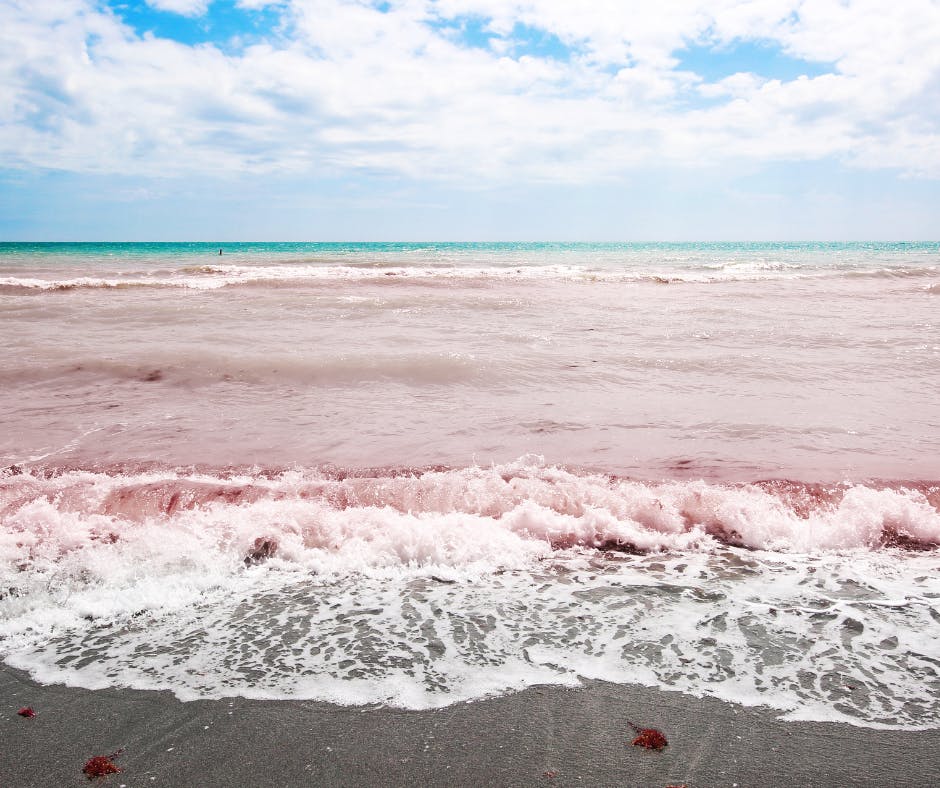What is Red Tide?
Red Tide is a term used to describe what scientists refer to as harmful algal blooms (HABs). High Karenia brevis algal concentrations produce microscopic toxins that reduce the oxygen levels in the water, turning it a deep red colour. While Karenia brevis is always present in the Gulf, the high concentrations found during bloom events are deadly for fish, make shellfish dangerous for consumption, and impact the surrounding air quality – making it difficult to breathe. There are a number of factors that influence these blooms, including temperature, nutrients, salinity, tides, and currents.
Is Red Tide present in Florida right now?
Yes. The Florida Fish and Wildlife Conservation Commission reported on March 1st, 2023, that “Karenia brevis was detected in 171 samples from and offshore of Southwest Florida, and one sample from Northwest Florida. The National Centers for Coastal Ocean Science has also issued an alert for moderate to high respiratory irritation from Red Tide at the beaches across this area.
Dr. Dave Tomasko, the Executive Director of the Sarasota Bay Estuary Program, told Sarasota Magazine that “this Red Tide is a continuation of the bloom that has been with us since after Hurricane Ian flushed untold amounts of nutrients into Sarasota and Tampa Bay.”
Hurricane Ian is likely not the only factor causing the Red Tide to be more prevalent this year, It is notable that major hurricanes and storms “churn up the Gulf waters in a wide swath. This movement of waters could increase the development of Karenia brevis.”
How does this affect my beach day?
As with any measurement of recreational water quality, HABs vary day to day in their location and concentration. If concentrations are high enough, breaking waves can cause toxins to mix with sea spray, posing a threat to beachgoers. While Swim Guide reports fecal indicator bacteria test results for Florida Beaches, it is always best to check with the local health authority, NOAA’s Harmful Algal Bloom Forecast or the Florida Fish and Wildlife Conservation Commission Red Tide Status page before heading to the beach.
What can I do?
There are many ways you can contribute to protecting Florida’s coast. Reporting any Red Tide impacts you see to local health authorities, staying informed about current conditions (see the section below), and volunteering your time to local groups like Tampa Bay Waterkeeper and Miami Waterkeeper are all great options. You can also contribute directly by submitting photos through Swim Guide’s Photo Submission Tool. These photos go into our Beach Image database and serve as valuable pieces of environmental evidence. It’s a simple way to become a community scientist and help protect your local waters.
Stay Informed about Red Tide
Below we’ve compiled a list of useful resources to help you stay informed and up-to-date on Red Tide events. Florida Fish and Wildlife have a real-time Google Earth map displaying all current Red Tide advisories.
NOAA Harmful Algal Blooms Links and Resources
Florida Fish and Wildlife Conservation Commission Red Tide Current Status

